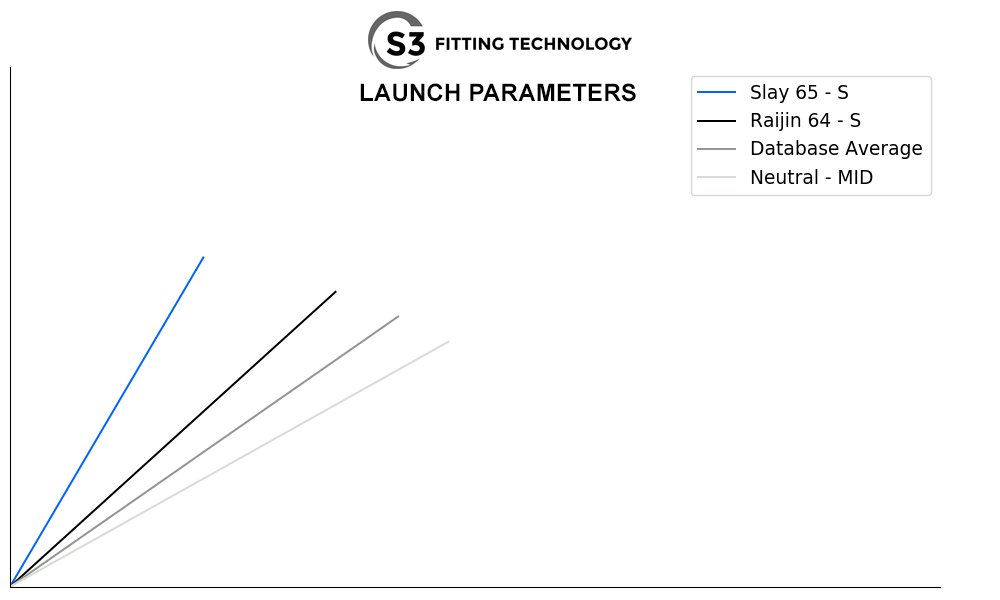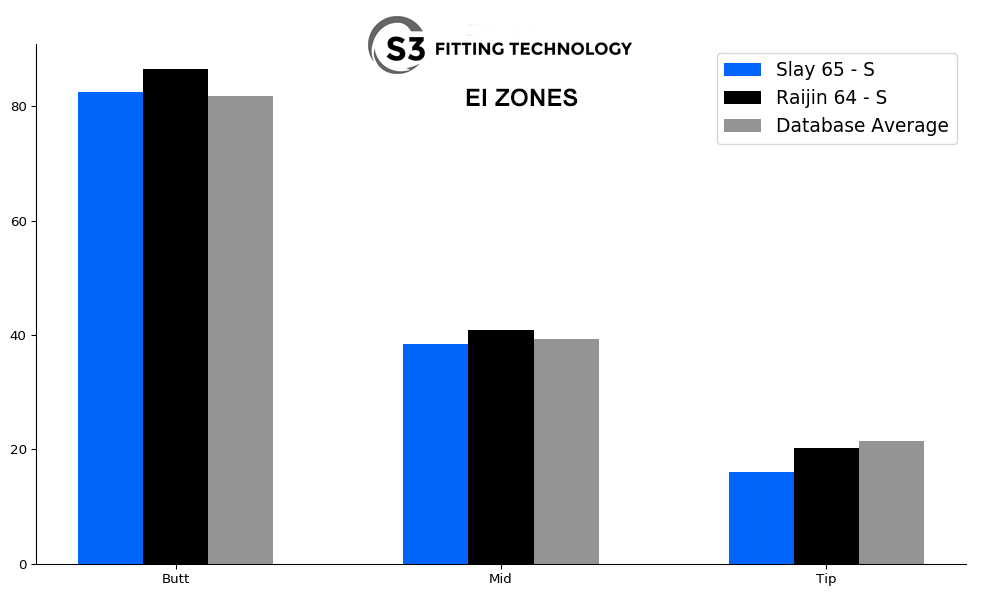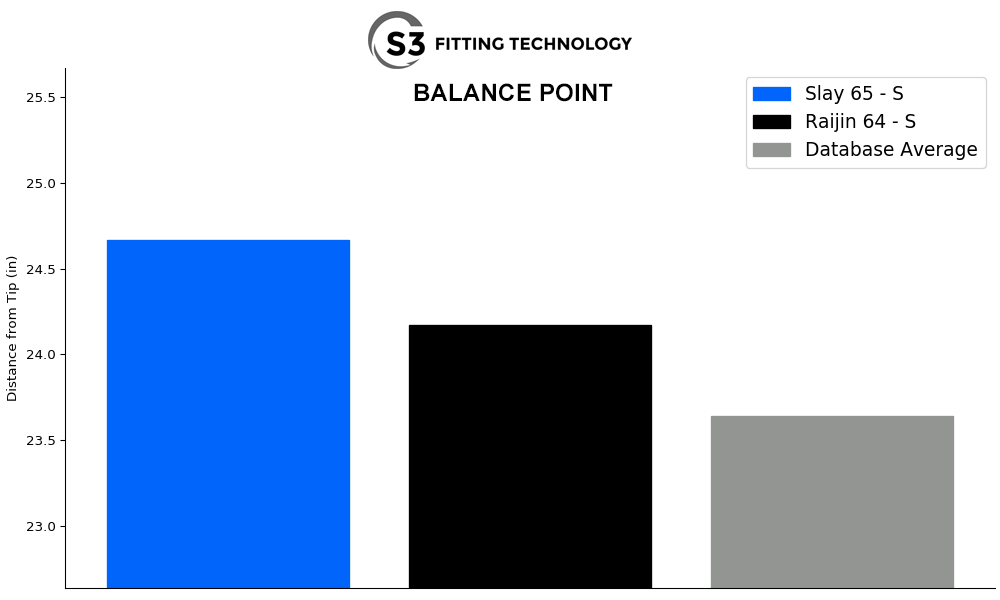Earlier this year we introduced you to VA Composites, a new shaft company started by Oban co-founder, Victor Afable. Sufficed to say, Victor has enjoyed a busy year. On the strength of his first shaft, the Raijin, Afable describes the first year of VA Shafts as “more than successful.” He’s exceeded his initial forecasts, Raijin orders from his 100 strong and growing dealer network are rolling in at a steady pace, and he’s recently inked deals that will put his shafts in at least two OEM’s upgrade lineups in 2018.
Of course, Afable also understands you can get but so far with a single shaft.
To complement the Raijin, Afable recently introduced his second shaft, the SLAY. Priced at $215 ($165 less than Raijin), the SLAY is a high launch offering designed for smoother swingers. Several of you have asked us for information about shafts that might fit slower, less aggressive players. Certainly, some of the options in the SLAY lineup fit that description.
We’ll dig into the Cool Clubs S3 Data in more detail below, but by way of quick comparison with Raijin, SLAY has a softer overall profile that’s most appreciable in its softer mid and more active tip sections.
SLAY Options
The VA SLAY is available in 55 (A,R,S), 65 (R,S,X), and 75 gram (S,X) models. An 85g SLAY Hybrid shaft is also available.
As with the Raijin, and a good bit of Victor’s previous work at Oban as well, the actual weight of the SLAY is heavier (~5g) than the number printed on the shaft. It’s not a big deal in most cases, but it’s something that those of you not working directly with a fitter should be aware of.
SLAY Data and Raijin Comparison
To make our shaft coverage more meaningful (and useful) to our readers, we’ve partnered with Cool Clubs, the Golf Industry’s Leading Custom Fit Club Company, to bring you shaft reviews powered by its Shaft Simulation System (S3). In case you missed it, check out our story detailing why we believe S3 provides the best insights into shaft performance.
“S3 Technologies utilizes the most advanced shaft testing technology in the industry. The Shaft Simulation System (S3), which was developed in 2013, is a fully-automated, all-in-one shaft profiling machine. In a matter of minutes, the S3 determines the following shaft specs: (Straightness, Consistency Profile, EI Profile, CPM Analysis and Torque. While some of the aforementioned specs can be obtained from shaft manufacturers, a lack of industry standards prevents that data from being used for accurate apples-to-apples comparisons. S3 Technologies, solves this challenge by testing all of our production in-house using the S3. This gives S3 Technologies a unique and in-depth understanding of the quality and performance of the industry’s shafts.”
Not only does S3 give us standardized quantitative information about the shaft(s) being reviewed, the data we share will provide you with a much better sense of how those shafts compare with similarly spec’d offerings on the market today.
To give you a clearer picture of the differences between the two current offerings in the VA lineup, we’ve also included some Raijin data from the S3 database.
VA SLAY LAUNCH CHARACTERISTICS
The dark gray line represents the S3 database average for stiff flex shafts in the 60-70g weight range. The light gray line represents a neutral profile, which is effectively the baseline for a mid-launch profile.
Based on S3 measurements, the VA SLAY 65 is classified as a HIGH launch shaft, while the Raijin 65 is classified as MID-HIGH.
ZONE EI
The following chart compares the stiffness of the VA SLAY and Raijin in the butt, mid, and tip sections to the S3 database average of stiff flex shafts in the 60-70g range.
As you can see, the SLAY is softer than the Raijin in all three regions of the shaft and is appreciably softer than the database average in the tip section.
BALANCE POINT
The following chart compares the balance point of the VA SLAY to both Raijin and the S3 database average of stiff flex shafts in the 60-70g range.
The SLAY’s balance point is higher than both Raijin and the database average. As you may recall from our Golf Geeks Story on Shaft Performance, a higher balance point allows for more head weight without drastically impacting the swingweight. For golfers seeking more distance (admittedly often at the expense of accuracy), this allows drivers to be built to longer playing lengths.
SWING SPEED RECOMMENDATIONS
The chart below provides swing speed recommendations for the entire SLAY lineup.
While we have not included Raijin in this chart, golfers should be aware that the speed recommendations for SLAY are significantly slower than they are for Raijin at comparable weight and flex due to its softer overall profile.
Note that these recommendations are based on the full range of Cool Clubs‘ building and fitting capabilities, including factors such as tipping and build length which can cause a shaft to play either softer or stiffer.
To simplify things a bit, you may wish to narrow these ranges. The sweet spot from a fitting perspective begins 25% from the slow end of the range. As a general rule, players with faster tempos, particularly in transition may fit into a stiff flex, while smoother swingers often fit into a softer flex.
Advice from the Cool Clubs Fitting Team
As we have and will continue to do with our shaft reviews, we’ve asked the experts on the Cool Clubs fitting team to share their thoughts on finding the right fit within the SLAY lineup.
VA Slay series shafts are designed to have a high launch (higher than similar shafts in the database) and low spin profile to help with distance and dispersion. However, you have to find the right model for your swing to benefit from these design considerations. Here we will discuss four key characteristics of the shaft (frequency, torque, weight, and bend point) to help find the right fit for your game.
The VA Slay is offered in 3 different stiffnesses for the 55 and 65 weight class, and 2 stiffnesses for the 75 weight class. Let’s focus on the VA Slay 65 for this first key component.
VA Slay 65 R, S, X: With frequencies of 245 CPM, 251 CPM, and 264 CPM respectively, each model requires a certain level of speed to get the most out of the shaft. For example, the VA Slay 65 S would perform optimally at speeds of about 105-110 mph. If the player is outside of this range, they might try to manipulate their swing to achieve decent results and make the shaft work, but that can ultimately lead to greater dispersion on the golf course.
Torque – VA Slay 55, 65, and 75: The VA Slay 55 has a torque of 3.7, while the VA Slay 65 has a torque of 3.5 and the 75 has a torque of 3.2. Consequently, the VA Slay 55 profile is more likely to perform optimally for a slower swing speed and perhaps smoother tempo player compared to the heavier and stiffer models. If the slower swing speed player tried to use the heavier weight at 65 with a 3.3 torque their shots could start to leak out to the right and stay low. Feel may be sacrificed and dispersion could suffer.
Weight – VA Slay 55, 65, and 75: At 59, 69, and 76 grams there are a variety of options to find the right fit for a player depending on head speed as well as the weight at which the player can control the shaft. Lighter-weight shafts can be swung faster, but it is necessary to make sure that speed does not come at the expense of accuracy. Never sacrifice accuracy for increased speed.
The lighter-weight 55 will produce a little more spin compared to the heavier weights, which will provide a more optimal fit at a speed range of about 80-90 mph. The VA Slay 65 S calls for a range of about 95-105 mph, while the VA Slay 75 X would perform optimally with a speed range of about 110-115 mph.
Bend Point – VA Slay 55, 65, and 75: The bend point on the Slay 55 is slightly lower compared to the 65 and 75 versions, meaning it should launch the ball higher and create a little more spin. This is better for slower speeds relative to the heavier-weight offerings. Even though the 65 and 75-gram models have a higher bend point, this shaft tends to launch higher than similar weight shafts with the same bend point. This can be an advantage for some players seeking higher launch, tighter dispersion, and more distance.
Similar Shafts
We’ve used the Cool Clubs S3 fitting database to identify shafts similar to the SLAY 65 (stiff flex). Note that the similar shafts listed may have different flex designations.
Based on weight, frequency, and bend profile, we found the closest match to be the Mitsubishi Kuro Kage XM 70S.
Similar shafts with high launch characteristics include the VA Raijin 64-R and the Accra Tour Z X 265-M3
Mid launch shafts with otherwise similar profiles include the Graphite Design Tour AD MT 6-S and the UST Elements Platinum F-3
Those looking for a low launch shaft with otherwise similar characteristics should consider the Fujikura Vista Pro 65-S.
Information is this review is based on test results for the 65-gram, S flex, SLAY shaft from Cool Club’s S3 Shaft Explorer, which offers over 2500+ shaft profiles for comparison. Visit S3Fitting.com to learn more about the S3 shaft testing technology, and be sure to try the demo to find out if the shaft currently in your driver is a good fit for your swing.
For more information on the SLAY, visit VAShafts.com.
WHAT’S NEXT?
As we mentioned in an earlier post, this is a new way for us to review golf shafts. Please continue to let us know what you like, what you don’t like, and what suggestions you have (we’ve already implemented some of them) for future S3-Powered reviews.
Also, if there’s a specific shaft you’d like to see us review next, please let us know.
























Cliff
6 years ago
How does the Slay compare to my Accra FX 260 M4 Stiff? I’m not exactly sure the Slay I hit today but probably either 65 or 55 Stiff version.
Cliff
6 years ago
The version I was fit to was VA Slay 65 FOUR. Just seeing how you think that compares to my other shaft, the Accra I listed above. Thank you.